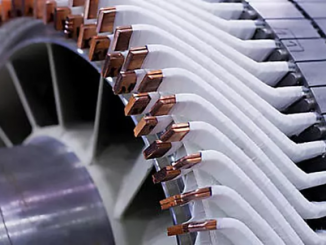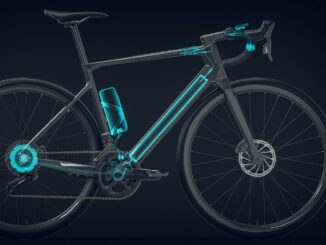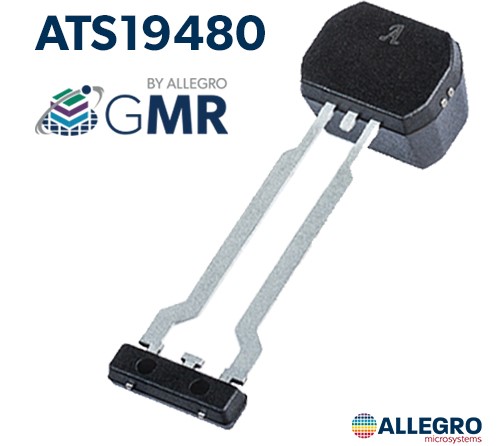
Make a five-minute pitch to a thousand plum contacts and potential funders, win $20,000 and a shot at $500,000. It was a good day’s work for start-up C-Motive at the U.S Department of Energy EPIC competition — drawing attention to the company’s innovative electrostatic motor that uses printed circuit boards instead of magnets.
In place of magnets, copper windings and electrical steel, the motor uses printed circuit board plates and a proprietary dielectric liquid. Both materials can be sourced around the world and are not reliant on a single supplier or country, making the motor an alluring alternative in support of sustainability objectives. The concept won the third-place prize in Round 2 of DOE’s Energy Program for Innovation Clusters competition in July and next will be considered for the grand prize of $500,000 in October. The program provides funds to clean energy business incubators with DOE funds to support energy entrepreneurs.

“This startup pitch competition furthers OTT’s mission to help technologies move through the tricky research, development, demonstration, and deployment continuum so they leave the lab and make it to the market,” said DOE Chief Commercialization Officer and Director of Office of Technology Transitions (OTT) Dr. Vanessa Chan. “Each of the finalists represent teams that have mastered entrepreneurial skills and a critical focus on their targeted markets and the needs of their customers.”
From a pool of hundreds of candidates, the EPIC incubators nominated 15 startups for the EPIC Pitch Competition. From that group, the top eight clean tech startups were selected to pitch their cutting-edge technologies to a panel of four industry experts and more than 1,000 attendees at the DOE’s Small Business Forum and Expo in New Orleans, Louisiana, on July 11-12, 2023.
As compared to traditional electric motors that rely on magnetic forces, C-Motive essentially uses ’static cling’ – the same force that keeps clothes stuck together coming out of a dryer or causes your hair to stand on end if you rub your head with a balloon. The machines are extremely high efficiency, greater than 98% in most applications, says the company, and can be operated without a gearbox and without any active cooling.
While traditional electromagnetic machines are optimized for high-speed operation and require a gearbox to slow rotational speed and meet desired torque output, electrostatic machines are naturally suited for low-speed operation and deliver low electrical losses. Within C-Motive machines are sets of cascading and alternating rotor (moving) and stator (affixed) plates. The rotors and stators are made from standard printed circuit boards and have a highly optimized set of conductive metal traces (poles) that radiate out from the center hub on the plates.
C-Motive machines do not work with a commercial off-the-shelf drive since electrostatic machines require a different drive topology, however, the company has designed compatible drives which have equivalent efficiency but are configured differently to deliver the high voltage needed. Operating at low speeds without a gearbox and without any active cooling requirements, they can generate up to 10x the specific torque (Nm/kg) of traditional motors. They can hold a position with virtually no energy losses (<0.2% full power), providing precise motion control with no torque ripple or cogging, and can operate fully submerged in water.
Percent of Total Machine Weight by Materials
| Materials | Permanent Magnet Motor | Induction Motor | C-Motive’s Electrostatic Motor |
| Copper | 10% – 20% | 15% – 35% | 1% |
| Electrical Steel | 30% – 40% | 40% – 60% | 0% |
| Magnets | 3% – 10% | 0% |
Currently, C-Motive is providing units for initial demo applications and internal testing with access to its technical team to evaluate, design, and give performance projections for specific applications. The company’s initial focus is on lower-speed applications that are less than 500 revolutions per minute and require high torque. Examples of initial target markets for the motors are conveyors for material handling, robotics and low speed, high volume fans such as employed in cooling towers with longer-term objectives seen as machines for e-mobility and renewable generation.
Based in Middleton, Wisconsin, C-Motive is an early-stage, venture-backed hardware technology company that is an outgrowth of research conducted at the University of Wisconsin-Madison. Its patent protection is diverse, worldwide and comprehensive. It owns 15 patents granted and applications, has exclusively licensed an additional 12 patents from the University of Wisconsin-Madison, is currently pursuing 20 additional patents and has over 50 trade secrets.
To learn more about the first principles of electrostatic machines, see the IEEE paper Macroscale Electrostatic Rotating Machines and Drives: A Review and Multiplicative Gain Performance Strategy authored by C-Motive employees. For more info, see www.c-motive.com.



